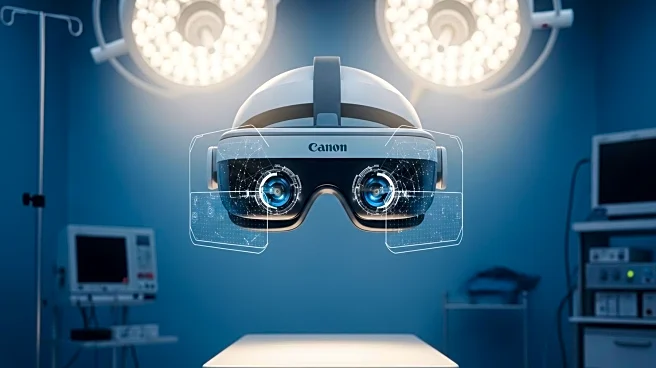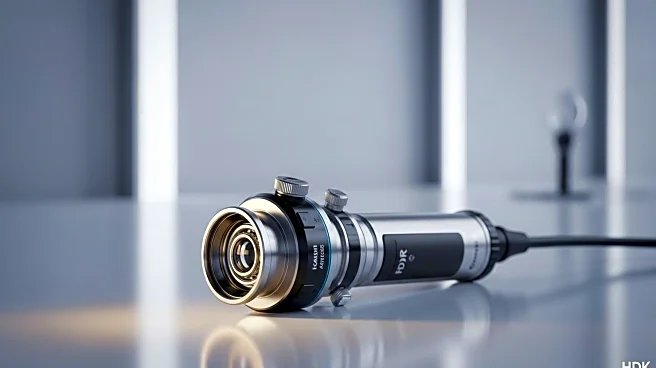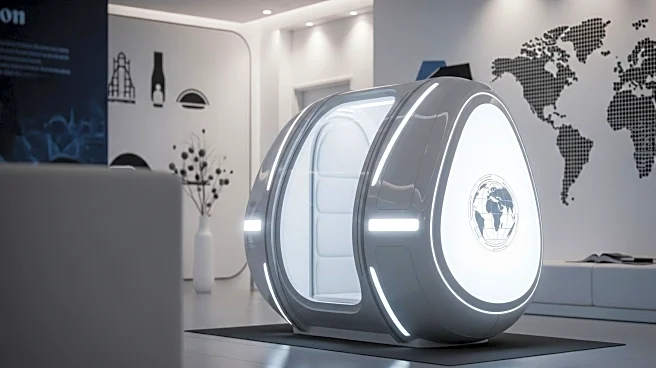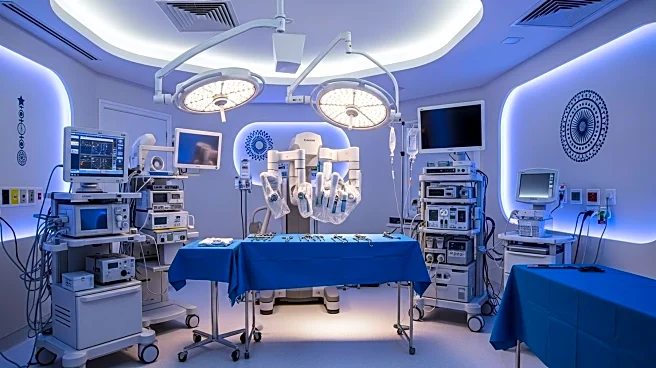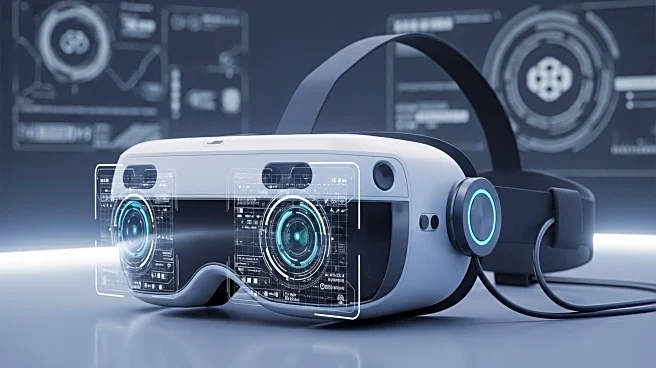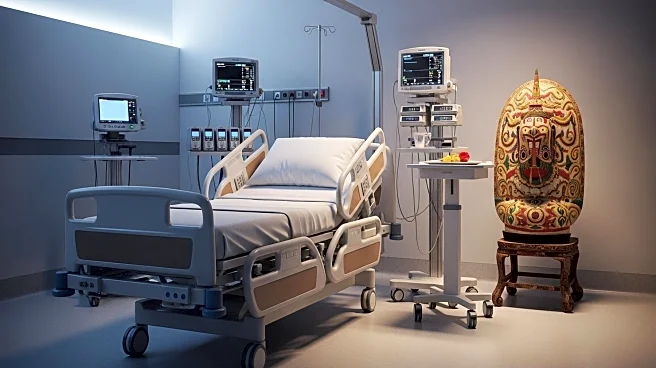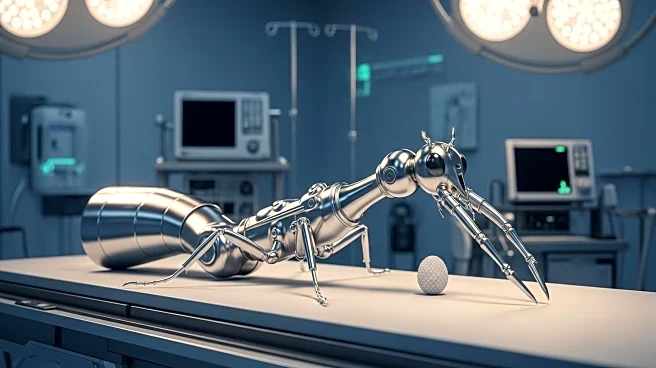What's Happening?
MediView XR, Inc., a leader in augmented reality (AR) surgical navigation, has raised $24 million in a Series A funding round. The round was led by GE HealthCare, with investments from Cleveland Clinic, Mayo Clinic, Edge Ventures, and JobsOhio Growth Capital Fund. MediView's platform provides clinicians with 'X-ray vision,' allowing them to see a patient's internal anatomy in 3D, overlaid directly onto their body. This technology simplifies procedures and enhances access to less invasive care. By fusing 3D CT scans with live ultrasound, the platform offers real-time visualization of organs and tissues, reducing cognitive load and improving workflow efficiency. The funding will support the expansion of clinical and commercial adoption of MediView's solutions, aiming to improve outcomes and set new standards in interventional care.
Why It's Important?
MediView's technology represents a significant advancement in surgical procedures, offering a more intuitive and precise method for clinicians to navigate complex interventions. The ability to visualize internal anatomy in real-time can lead to more accurate targeting of lesions and improved patient outcomes. This innovation is particularly important as it addresses the cognitive challenges faced by physicians who traditionally rely on 2D images. The investment from prominent healthcare institutions underscores the potential of AR in transforming medical procedures, making them more predictable and accessible. As the healthcare industry continues to embrace technology, MediView's platform could play a pivotal role in shaping the future of surgical care.
What's Next?
With the new funding, MediView plans to accelerate the adoption of its AR solutions in clinical settings. The company aims to expand its partnerships and collaborations with leading healthcare institutions to further integrate its technology into standard medical practices. As MediView continues to refine its platform, it may explore additional applications of AR in healthcare, potentially leading to broader industry adoption. The success of this initiative could pave the way for more innovations in medical imaging and surgical navigation, ultimately enhancing patient care and safety.

